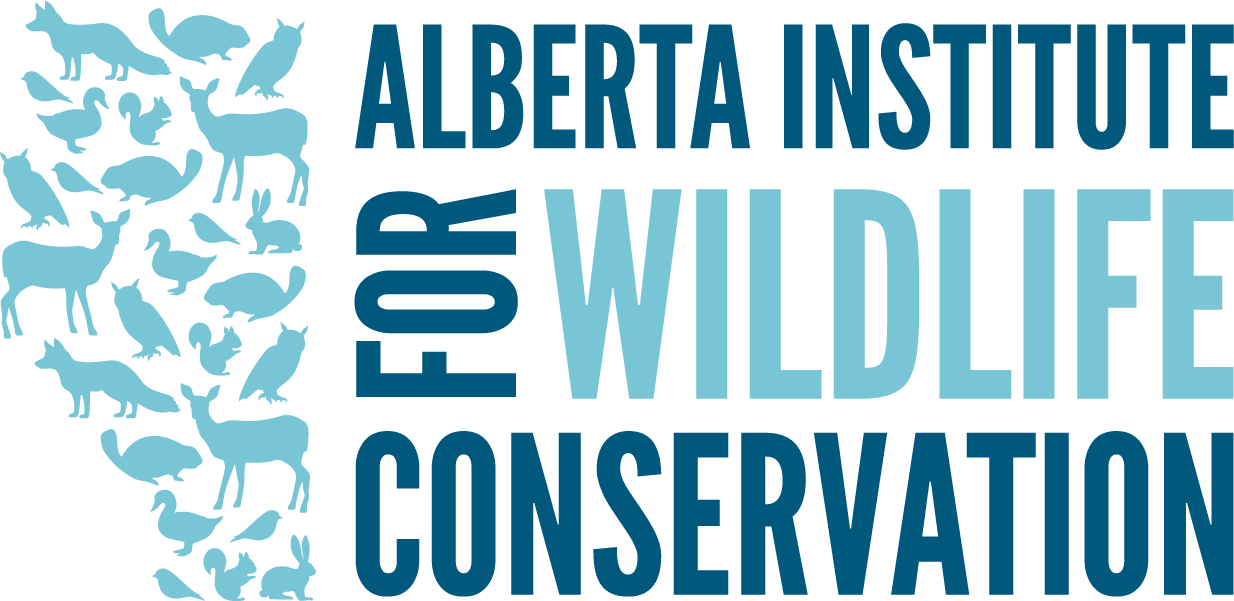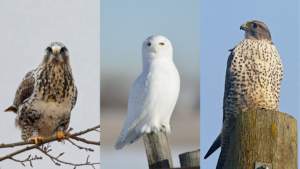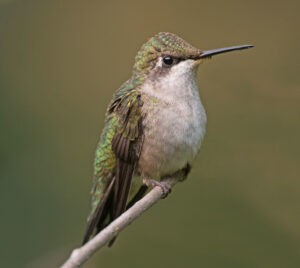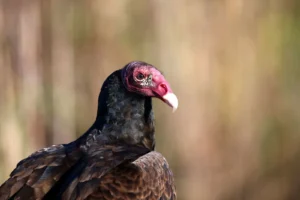By Holly Hastings
A Splash of Color in the Wild
The wood duck is a distinct North American species and our most striking waterfowl.3 The only known close relative is in eastern Asia, known as the Mandarin duck.4 Breeding males, with their iridescent green and white crests, red eyes, and chestnut breasts, are unmistakable in their breeding plumage worn from October to June.5 Meanwhile, the more subdued females have an elegant white eye-ring and sleek brown plumage.6 Both sexes share the downward pointing crest on the back of their heads and their distinctive broad square tails when in flight.7 Their scientific name (Aix sponsa) means “”in wedding raiment”” which is adorable given their unique colours!8 They are mainly herbivorous, feeding on various foods, including cypress seeds, aquatic plants, grasses, insects, and fruits.9 Their habitat comprises swamps, river edges, beaver ponds, and bottomland forests.10 Wood ducks feed through very shallow dives or dabbling and are strong fliers reaching speeds up to 30 mph.11
Female wood ducks have a singular vocalization “crrek, crrek”, while the males have two vocalizations “whoo-eek” and “jeee”.12 Click here to hear them!
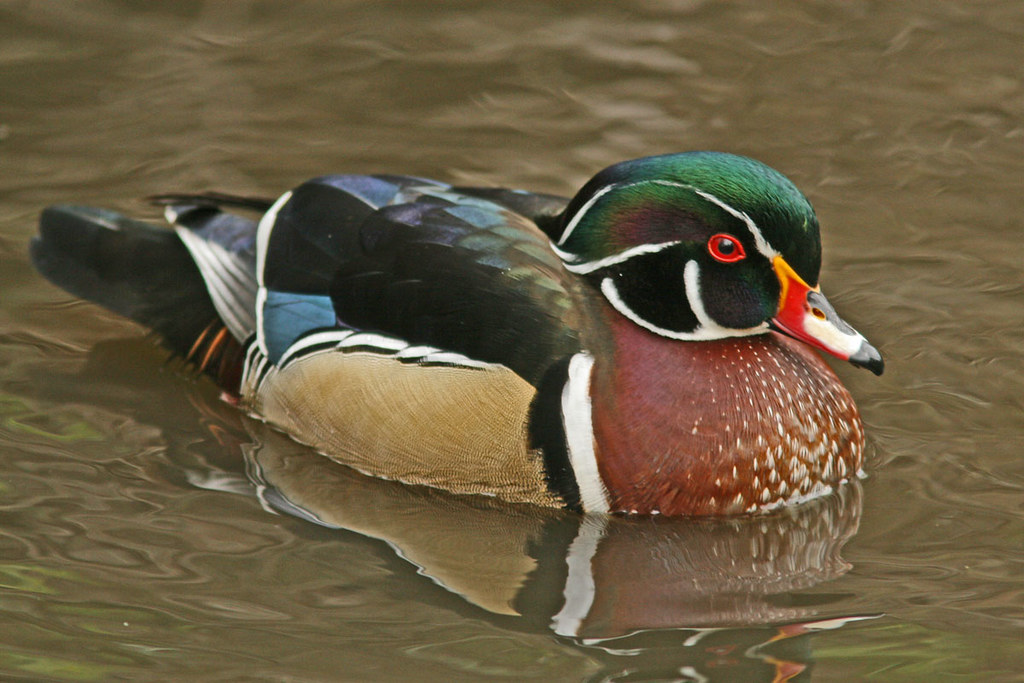
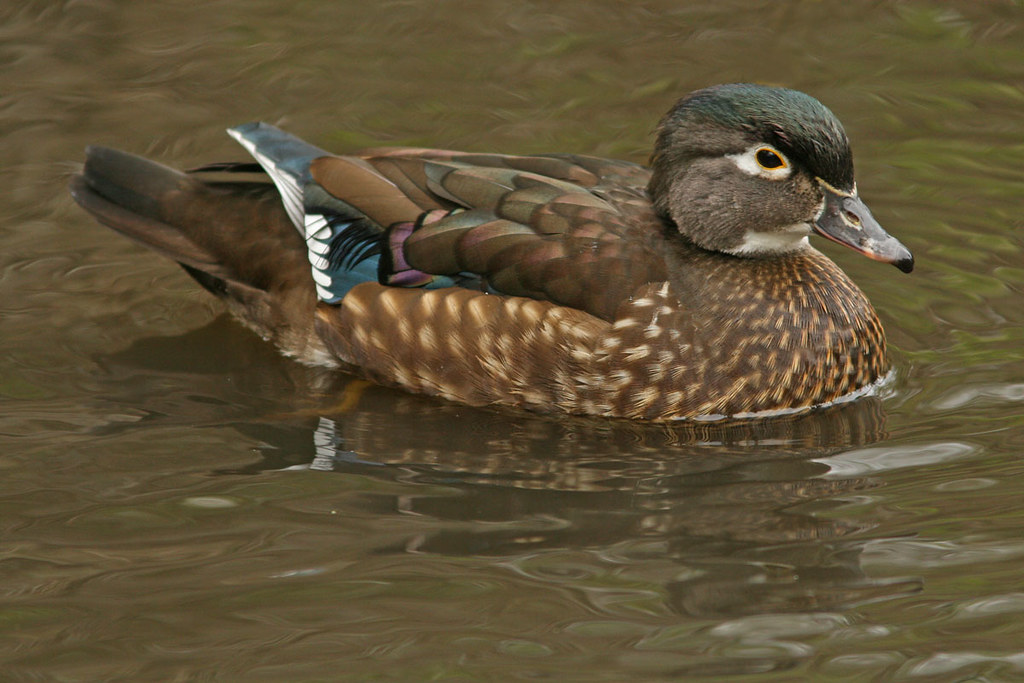
Fun Fact! Wood ducks are one of the few duck species with sharp claws, allowing them to perch on tree branches.13
A Daring Start

Unlike most ducks, wood ducks prefer tree nests.14 Since they can’t create their own, they rely on tree cavities or abandoned woodpecker holes created by pileated woodpecker (Dryocopus pileatus), usually near water, but sometimes up to 1.9 miles away.15 The female lines the nest with down feathers from her breast and lays 7–15 eggs, incubating them for about 30 days.16 A day after hatching, the ducklings use their claws to climb out of the nesting cavity to take a daring leap from the nest, tumbling to the ground from heights of up to 89 meters before following the mother straight to water.17
Could you imagine doing that leap of faith?
They then spend the next 8-9 weeks learning to hunt from their mother.18

Romance on the Water
Pairs form either on wintering grounds or during spring migration, with males performing elaborate displays, such as raising their wings and tails while swimming, ritualized drinking, preening, and shaking movements to attract a mate; then they look for nest cavities in the early mornings.19 It is the only known North American duck to produce two broods in a single breeding season.20 Once the female begins incubating, the male gradually distances himself and joins a larger group of males, leaving them to care for the young.21 The group of males will migrate from their breeding grounds in anticipation of moulting their breeding plumage, which is usually absent by August, they then have plumage similar to the females and, interestingly, have also shed their flight feathers, leaving them flightless for a few weeks until they grow back.22 The female will stay with the young until they fledge.23
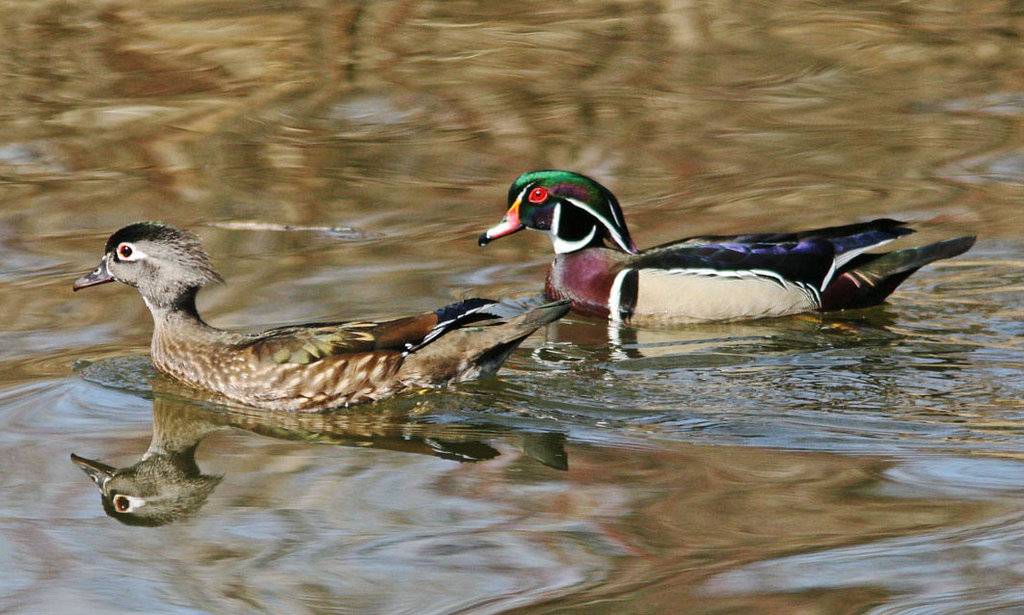
Did You Know? Wood duck females commonly lay eggs in each other’s nests, leaving the other female to raise them—a behavior known as “”egg-dumping”” also called intraspecific brood parasitism.24
Following the Seasons
Wood ducks migrate based on their breeding range. Birds from northern regions head south in the fall, wintering in the southeastern U.S. and parts of Mexico, while some southern populations, especially females, can remain year-round.25 Males follow females to their nesting areas, which means a male’s migration pattern may change yearly depending on his mate’s origin.26 This annual migration is a challenging journey for the wood ducks, as they must navigate long distances and changing weather conditions.
A Conservation Triumph Story
Once scarce due to habitat loss and overhunting in the early 1900’s, wood ducks made a remarkable comeback thanks to protective laws and artificial nest box programs, and they have become a conservation success story.27 Today, they remain a triumphant symbol of conservation efforts in North America, inspiring hope for the future of wildlife preservation.28
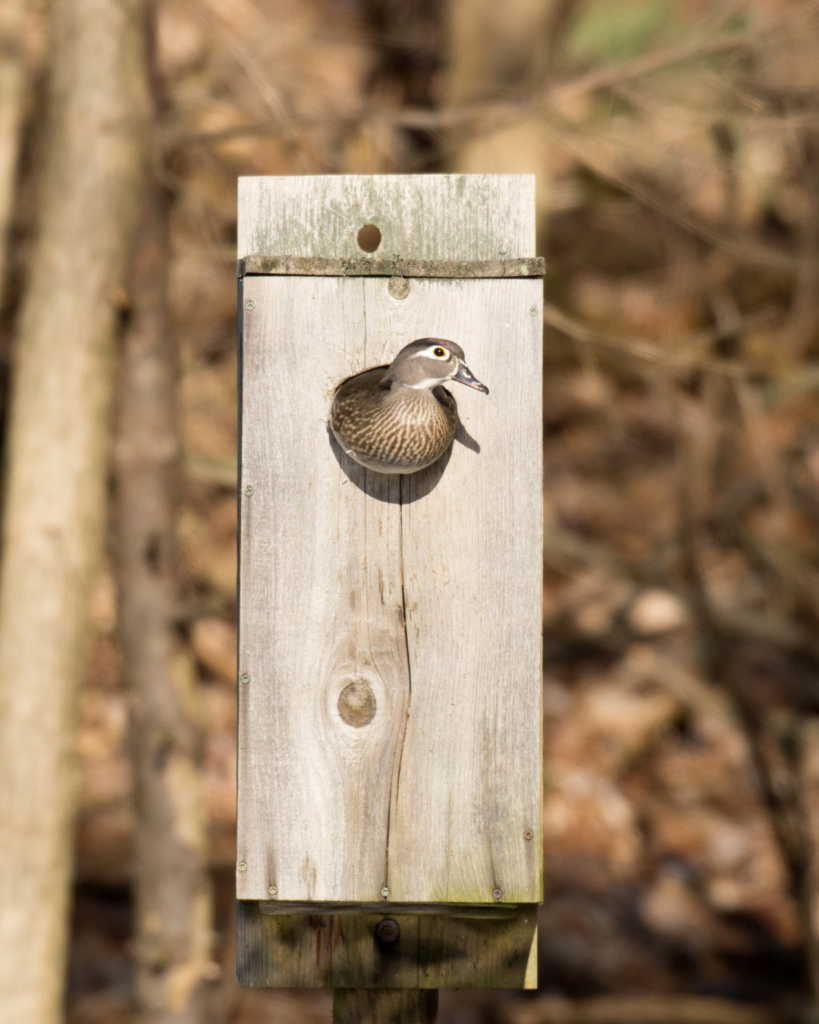
References
- “Wood Ducks at Inglewood Bird Sanctuary.” Birds Calgary. https://birdscalgary.com/tag/wood-duck/#:~:text=Wood%20Ducks%20are%20probably%20our,in%20their%20breeding%20plumage%20now.
- “Wood Ducks at Inglewood Bird Sanctuary.” Birds Calgary. https://birdscalgary.com/tag/wood-duck/#:~:text=Wood%20Ducks%20are%20probably%20our,in%20their%20breeding%20plumage%20now, “Wood Duck.” Hinterland Who’s Who. https://www.hww.ca/wildlife/birds/wood-duck/.
- “Wood Duck.” Hinterland Who’s Who. https://www.hww.ca/wildlife/birds/wood-duck/.
- “Wood Duck.” Hinterland Who’s Who. https://www.hww.ca/wildlife/birds/wood-duck/.
- “Wood Duck.” Hinterland Who’s Who. https://www.hww.ca/wildlife/birds/wood-duck/.
- “Wood Duck.” Ducks Unlimited Canada. https://www.ducks.ca/species/wood-duck/.
- “Wood Duck.” Hinterland Who’s Who. https://www.hww.ca/wildlife/birds/wood-duck/.
- “Wood Duck.” Ducks Unlimited Canada. https://www.ducks.ca/species/wood-duck/.
- “Wood Duck.” Ducks Unlimited Canada. https://www.ducks.ca/species/wood-duck/, “Wood Duck.” Hinterland Who’s Who. https://www.hww.ca/wildlife/birds/wood-duck/.
- “Wood Duck Life History.” All About Birds. https://www.allaboutbirds.org/guide/Wood_Duck/lifehistory.
- “Wood Duck Life History.” All About Birds. https://www.allaboutbirds.org/guide/Wood_Duck/lifehistory.
- “Wood Duck.” Hinterland Who’s Who. https://www.hww.ca/wildlife/birds/wood-duck/.
- “Wood Duck.” Ducks Unlimited Canada. https://www.ducks.ca/species/wood-duck/.
- “Wood Duck.” Hinterland Who’s Who. https://www.hww.ca/wildlife/birds/wood-duck/.
- “Wood Duck.” Hinterland Who’s Who. https://www.hww.ca/wildlife/birds/wood-duck/, “Wood Duck Life History.” All About Birds. https://www.allaboutbirds.org/guide/Wood_Duck/lifehistory.
- “Wood Duck.” Ducks Unlimited Canada. https://www.ducks.ca/species/wood-duck/.
- “Wood Duck.” Ducks Unlimited Canada. https://www.ducks.ca/species/wood-duck/, “Wood Duck.” Hinterland Who’s Who. https://www.hww.ca/wildlife/birds/wood-duck/.
- “Wood Duck.” Hinterland Who’s Who. https://www.hww.ca/wildlife/birds/wood-duck/.
- “Wood Duck.” Hinterland Who’s Who. https://www.hww.ca/wildlife/birds/wood-duck/, “Wood Duck Life History.” All About Birds. https://www.allaboutbirds.org/guide/Wood_Duck/lifehistory.
- “Wood Duck.” Ducks Unlimited Canada. https://www.ducks.ca/species/wood-duck/.
- “Wood Duck.” Ducks Unlimited Canada. https://www.ducks.ca/species/wood-duck/.
- “Wood Duck.” Hinterland Who’s Who. https://www.hww.ca/wildlife/birds/wood-duck/.
- “Wood Duck.” Ducks Unlimited Canada. https://www.ducks.ca/species/wood-duck/.
- “Wood Duck Life History.” All About Birds. https://www.allaboutbirds.org/guide/Wood_Duck/lifehistory.
- “Wood Duck.” Ducks Unlimited Canada. https://www.ducks.ca/species/wood-duck/, “Wood Duck.” Hinterland Who’s Who. https://www.hww.ca/wildlife/birds/wood-duck/, “Wood Duck.” Audubon. https://www.audubon.org/field-guide/bird/wood-duck.
- “Wood Duck.” Audubon. https://www.audubon.org/field-guide/bird/wood-duck.
- “Wood Duck.” Audubon. https://www.audubon.org/field-guide/bird/wood-duck.
- “Wood Duck.” Audubon. https://www.audubon.org/field-guide/bird/wood-duck.
